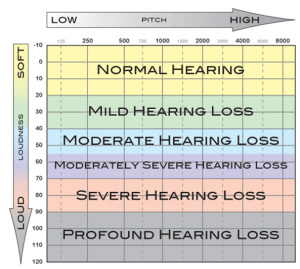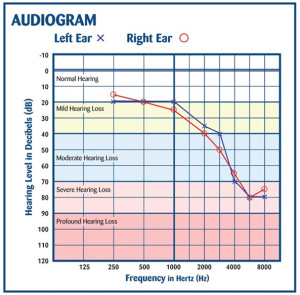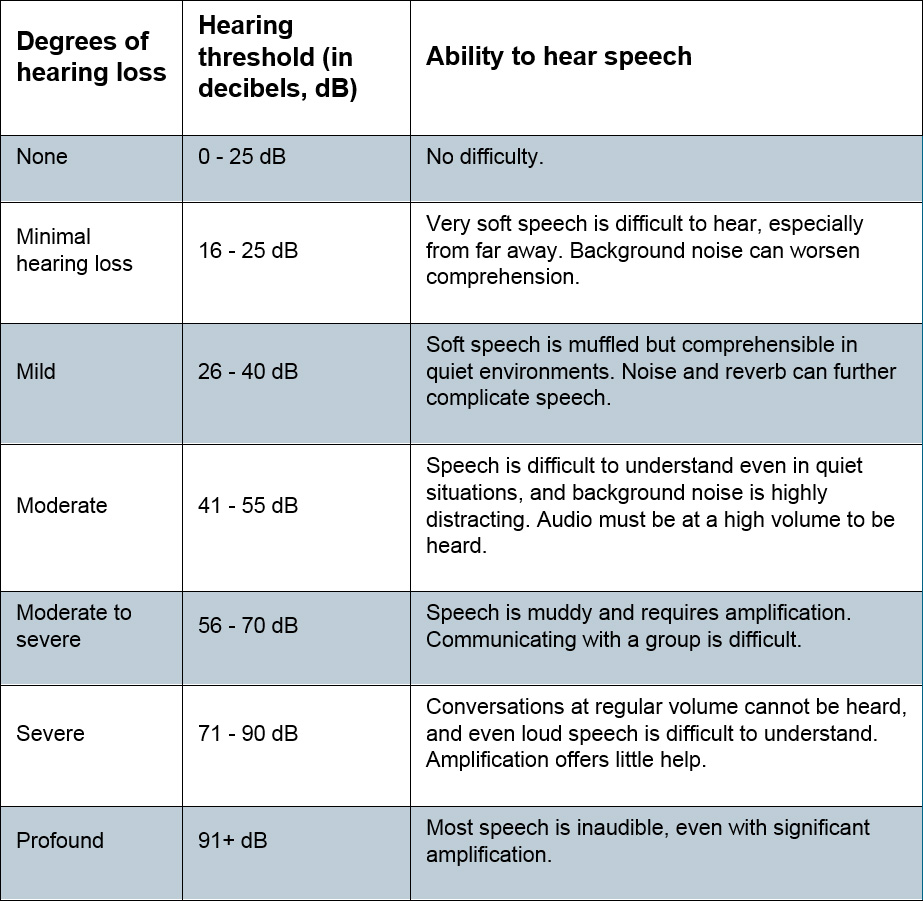The amount (or degree) of hearing loss a person experiences
is based on hearing sensitivity. In order to determine a
person’s degree of hearing loss, their hearing thresholds
must be determined. Hearing thresholds are defined as the
lowest level sound that can be heard 50% of the time. The
decibel (or dB) is the unit of intensity used to describe
hearing sensitivity. During a diagnostic hearing evaluation,
the threshold is measured at different frequencies (or
Hertz, Hz) in each ear.
The audiogram is divided into two halves by two axes.
Vertical Axis
The Y-axis (vertical) measures the intensity, or loudness, of
the sound. It’s measured in decibels (Db) and range from -10
to 110 on the audiogram
In context, 30dB is approximately the volume of whispering,
60dB is around the level of a normal conversational sound,
80dB is approximately the level of heavy traffic, and 140dB
is approximately the level of a really loud sound (such as a
gunshot or jackhammers).
On the graph, the lowest values are at the top and the
highest at the base. Normal hearing humans can hear sounds
below zero decibels (dB), where the graph starts. Adults
with hearing ranges of 0 to 20 dB are considered normal.
What we’re looking for is hearing loss that falls below this
level of measurement.
Horizontal Axis
The horizontal axis, on the other hand, shows the frequency
and pitch of a tone. Hertz (Hz) is a unit of frequency
measurement that expresses the number of vibrations per
second that make up a sound wave.
It’s important to keep this in mind when looking at your
audiogram: as you move further to one side, the frequency
gets higher. It’s similar to how piano keys work: the lowest
pitch is on the left, and it rises in pitch as you move
right.
A normal ear should be able to hear frequencies as low as 20
Hz and as high as 20,000 Hz with ease. However, the majority
of speech sounds occur between 250 and 8,000 Hz, which is
the frequency range most commonly tested for.
The audiogram will display the threshold levels for each ear.
This line represents your hearing capacity in terms of
volume and frequency.
A red “O” indicates a right ear response, whereas a blue “X”
indicates a left ear response. A red line connects the “O”s,
while a blue line connects the “X”s shows hearing levels in
the left ear measured with headphones (air conduction).
< or [ is the result from your right ear as measured by bone
conduction
> or ] is the result from your left ear as measured
by bone conduction.
When something stops sounds from moving through the
eardrum and middle ear, bone conduction hearing
levels will be better than air conduction levels.
This means a conductive hearing loss is present.
When sound moves normally through the outer and
middle ear, but the inner ear does not work
normally, both bone conduction and air conduction
hearing levels will be the same. A sensorineural
hearing loss is present.



